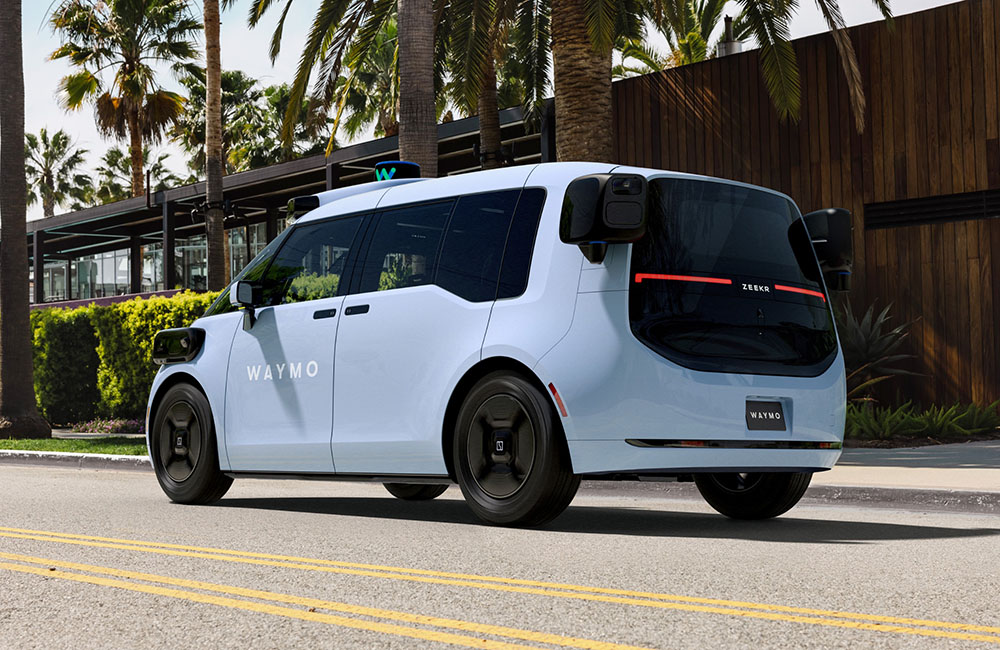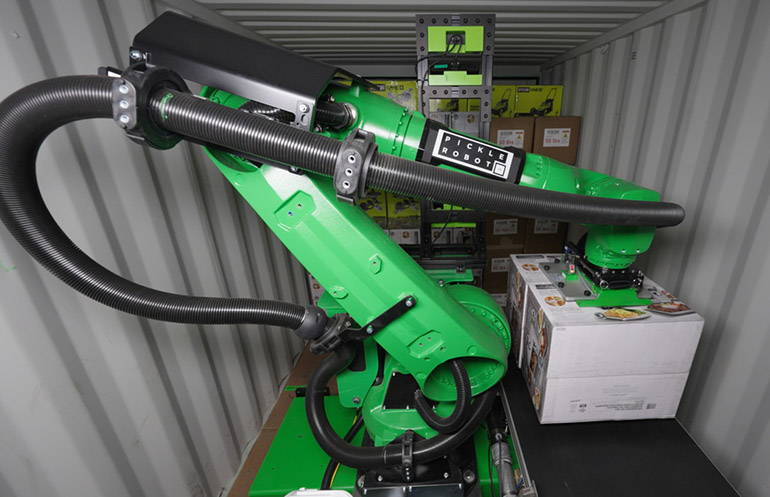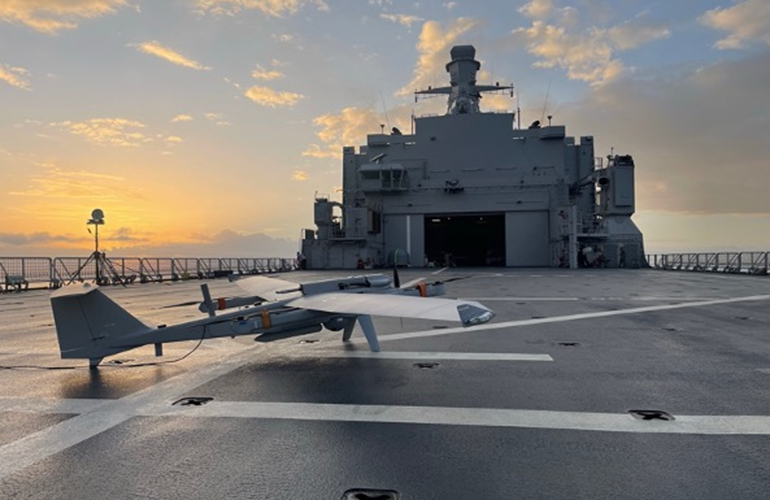Waymo rolled out its 6th generation robotaxi on Geely’s all-electric Zeekr vehicles. | Source: Waymo
Waymo has released its 6th generation robotaxi. The self-driving unit of Alphabet says its approach of designing both hardware and software from the ground up has been crucial to its success, and that continues with its latest generation robotaxi.
Waymo’s vehicles are already serving more than 100,000 paid trips every week across its deployment sites using its 5th-generation robotaxi, which was released in March 2020. The company says this system has been crucial in helping it scale its service to some of the densest cities in the U.S. Its latest robotaxi update, however, aims to reduce system cost while delivering more resolution, range, and compute power to enable more capabilities. Waymo hasn’t specified how much it costs to make its vehicles.
The 6th generation robotaxi is equipped with 13 cameras, 4 lidar, 6 radar, and an array of external audio receivers (EARs). The company optimized this new sensor suite for greater performance at a significantly reduced cost. It provides the Waymo Driver with overlapping fields of view, all around the vehicle, up to 500 meters away, day and night, and in a range of weather conditions.
All of this new hardware is rolling out on Geely’s all-electric Zeekr vehicles. Waymo partnered with Geely in 2021 to integrate its Waymo Driver into a version of Zeekr, which China-based Geely says was designed in Sweden specifically for autonomous ride-hailing. Waymo previously used fully electric Jaguar I-PACE vehicles as the base of its robotaxis.
The Biden administration in May 2024 proposed a 100% tariff on electric vehicles from China, up from 25%. “While we are monitoring the China tariff situation, we have no updates to share,” Waymo told The Robot Report.
Waymo expands robotaxi capabilities
Redundancies are essential in an autonomous driving system to provide safe backup functions for assured reliability and unexpected weather conditions. This is why the Waymo Driver has a surround-view of the world from three sensing modalities.
Enhanced camera-radar surround view and more sophisticated lidars allow Waymo’s 6th generation robotaxi to navigate the wide variety of events it might encounter on a larger set of road conditions. While the 6th generation’s sensor suite is extensive, Waymo said it used fewer sensors than it did in its previous generation. The company’s advancements in sensor technology and strategic sensor placement allowed it to reduce the number of sensors while still maintaining its safety-critical redundancies.
The company can swap out various sensing components to match the specific conditions of each operating environment, like adjusting sensor cleaning for vehicles in colder climates. Speaking of colder climates, you might notice the cities Waymo has deployed its robotaxis in are typically warm throughout the year. This is something its latest generation vehicle could change, the company said.
Waymo’s current system allows it to provide safe and reliable service to riders in the cities it operates, even in extreme heat, fog, rain, and hail. Through regular road trips to newer cities, Waymo says it has deepened its understanding of winter weather’s impact on its technology and operations, and applied these insights directly to its 6th generation system.
For example, since its robotaxis are exposed to the elements for long periods without manual intervention, Waymo implemented preventative measures for each sensor to maintain a clear view of its surroundings whether it’s driving through a buggy Texas road or operating in freezing temperatures. Complementing these protective strategies, the company builds significant margins into its sensor capabilities to ensure reliable performance even in adverse conditions, in turn increasing each modality’s range.
Waymo plans to deploy its robotaxis in new cities faster
Now with six generations of hardware manufactured and integrated into thousands of vehicles, Waymo says it has significant experience developing and operating fully autonomous technology at scale. To safely and swiftly integrate its next-generation Driver into its fleet, the company tests and validates its new hardware – from the component to system level – through a rigorous regimen of structured tests, real-world driving, and simulation.
Its 6th generation sensor suite already has thousands of miles of real-world driving experience under its wheels, and millions more in simulation. The Waymo Driver learns from collective experiences gathered across its fleet, including previous hardware generations. Waymo says this shared knowledge reduces the miles needed to train and validate the underlying foundation models that autonomously drive its vehicles, accelerating and enhancing the development of each new generation.
The company says safety is its guiding principle, and its system’s performance in simulation shows promising indications that Waymo is on track to begin operation without a human behind the wheel in about half the time.
Other recent robotaxi milestones
While Waymo isn’t the only robotaxi company operating in the U.S., it’s a clear leader in the field. Just two weeks ago, it expanded its robotaxi operations in San Francisco and Los Angeles. This was the latest in a series of expansions the company has rolled out this year, which include removing its waitlist in San Francisco, launching commercial operations in Los Angeles, and expanding its Phoenix service area. Not to mention, Alphabet has doubled down on its investment in Waymo by announcing it will pour up to $5 billion into the company in the coming years.
Waymo’s biggest competition, at least in the past, has come from GM’s self-driving unit Cruise. This company had a rocky 2023, which resulted in the California Department of Motor Vehicles (DMV) suspending Cruise’s permits in the state, and Cruise pausing all operations across the country.
This year, Cruise seems to be rebuilding some of its operations. It resumed manual driving in Houston and Dallas and announced that supervised driving is underway in Phoenix and Dallas. It began manual operations in Phoenix in April. Cruise has yet to restart robotaxi operations in its home state of California. In June, General Motors said it would invest an additional $850 million into the autonomous vehicle developer.
Zoox is another notable autonomous vehicle company operating in the U.S. The Amazon subsidiary began testing its purpose-built robotaxi in Austin and Miami in June 2024, marking the fourth and fifth public testing locations for the company. Zoox began operating in San Francisco in 2018, and then it expanded to Las Vegas in 2019 and to Seattle in 2021.

 3 months ago
62
3 months ago
62









 English (US) ·
English (US) ·